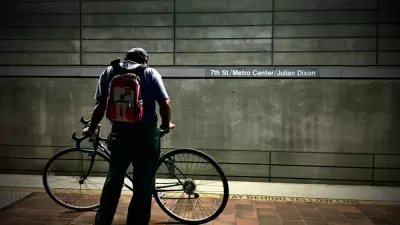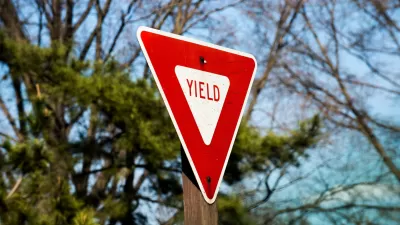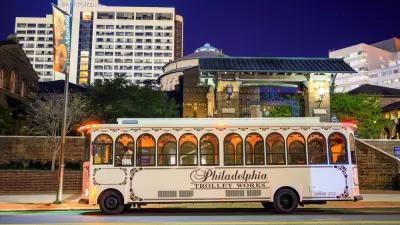Transportation models are biased in ways that result in inefficient, unfair and environmentally harmful planning decisions. Improve your analysis or prepare to be sued.
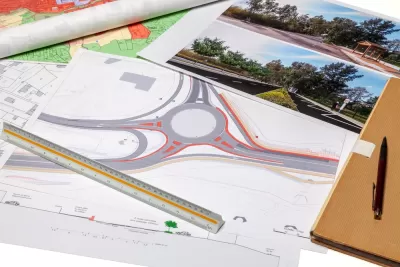
Most people probably assume that transportation planning is based on sophisticated analysis of all impacts and options to ensure that every dollar and square meter of road right-of-way is invested for maximum efficiency and equity. Unfortunately not! In fact, practitioners use demonstrably inaccurate models that often result in inefficient, unfair, and environmentally harmful decisions. In the past, practitioners hid behind their technical expertise, but they are starting to face legal challenges. We must do better.
A new article, “Are Traffic Studies 'Junk Science' That Don’t Belong in Court?,” by professors Kristina Currans and Kenneth Stahl, published in the Journal of the American Planning Association, identifies biases in Traffic Impact Analyses (TIA). The authors explain, “It is well known within the community of transportation planners that the methodology widely employed to estimate vehicle traffic demand in TIAs is often inconsistently inaccurate and biased towards facilitating personal vehicle mobilities.”
Similarly, the article, “Trip Generation for Smart Growth Projects,” by professors Robert J. Schneider, Susan L. Handy and Kevan Shafizadeh, found that households in compact, multimodal, Smart Growth neighborhoods own about half as many vehicles and generate about half as many vehicle trips as standard models predict.
Conventional models also underestimate the impacts and benefits of improvements to non-auto modes and TDM programs. For example, a detailed study, Travel Demand Management: An Analysis of the Effectiveness of TDM Plans in Reducing Traffic and Parking, found that office buildings in the Minneapolis-St. Paul region that implemented transportation demand management (TDM) plans generate about a third less traffic and need a fifth fewer on-site parking spaces, on average, than predicted by Institute of Transportation Engineers’ models, as illustrated below.
TDM Program Impacts on Trips and Parking Demands

Similarly, a recent study, Don’t Underestimate Your Property: Forecasting Trips and Managing Density over the Long Term, found that 13 residential and commercial developments with TDM programs actually generate 63% fewer trips than trip generation models predict, more than double the targets. As one traffic engineer explained,
Overestimating trip generation can have deleterious effects on a neighborhood because trip generation is so closely linked to the amount of square footage that a property is allowed. More than any other feature of a development, vehicle trip generation estimates determine density limits and impacts. (Mike Workosky, traffic engineer and President of Wells + Associates)
These biases greatly increase parking costs and traffic impact fees for infill development, which drives up housing costs and encourages automobile-dependent sprawl.
Many traffic models simply extrapolated past trends to predict that traffic volumes will continue to grow, which is used to justify roadway expansions. In fact, per capita vehicle travel peaked in 2004 and current trends—aging population, rising fuel prices, reduced commuting, e-bikes, changing consumer preferences, increasing health and environmental concern—are likely to reduce future vehicle travel demands. The figure below compares predicted and actual U.S. VMT trends.
Predicted Versus Actual VMT Growth (Dutzik 2021)
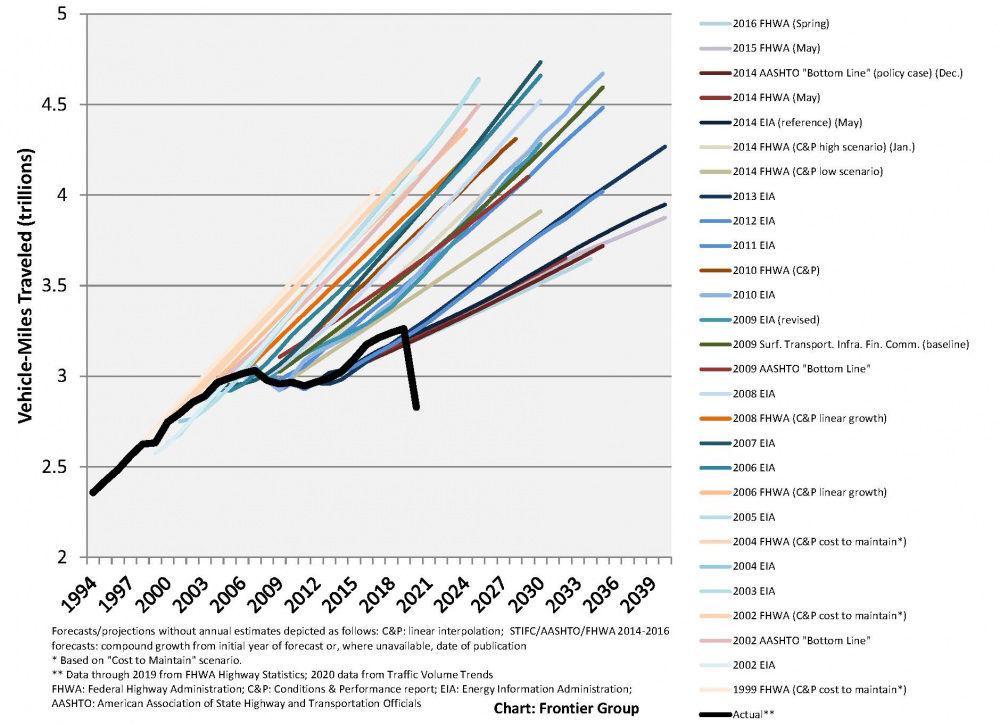
Another major bias is the tendency of traffic models to underestimate induced vehicle travel—the additional vehicle-miles that will occur if an urban roadway is expanded that will not otherwise occur—and the additional external costs it imposes. This exaggerates highway expansion benefits and undervalues improvements to non-auto modes and TDM incentives. The recent article, “Induced Vehicle Travel in the Environmental Review Process,” and report, Calculating and Forecasting Induced Vehicle Miles of Travel Resulting from Highway Projects: Findings and Recommendations from an Expert Panel, provides guidance for analyzing these impacts.
This is important because, to a large degree transportation planning is self-fulfilling: if a transportation agency prepares for expected traffic growth by expanding roads and parking facilities we get more driving, but if instead it plans a more multimodal transportation we get more walking, bicycling and public transit travel, and less driving.
These modelling biases perpetuate automobile-dependency and sprawl. This is wasteful and unfair, particularly for physically, economically and socially disadvantaged people who want more affordable transportation and housing options. New accessibility-based models can help identify better solutions, including the benefits of improvements to non-auto modes and more compact development, and the effectiveness of TDM incentives to reduce vehicle travel and associated traffic problems.
My research indicates that in North America more than 90 percent of transportation infrastructure dollars are spent on road and government-mandated parking facilities, which is greater than automobile mode shares, drivers as a portion of all travellers, or motorists as a portion of crash casualties. Fairness requires more comprehensive analysis.
Why do transportation agencies spend so much more on automobile infrastructure than other modes, despite their lower total costs and greater benefits? It is partly the fault of practitioners who perpetuate biased planning practices. It is time for reform. Either we create more accurate, comprehensive and multimodal planning practices ourselves, or we will be forced to by litigation.
Legal experts are starting to challenge automobile-oriented planning practices. For example, a recent New York University Law Review article, “Should Law Subsidize Driving?” by Professor Greg Shill argues that current planning practices subsidize driving in ways that exacerbate automobile dependency and resulting harms including high crash rates, ill health and inequity.
Some jurisdictions are inverting the transportation planning process by changing the goal from maximizing automobile traffic speeds (higher LOS) to minimizing vehicle travel (reducing VMT). Many jurisdictions now have VMT reduction targets, and some, including California, give these legal mandates. As a result, transportation agencies can be sued if they expand highways rather than invest in more efficient alternatives such as resource-efficient modes, TDM incentives and Smart Growth development policies.
Some jurisdictions are taking preemptive action. For example, dozens of Welsh roadway projects were halted or significantly amended after a review concluded that they contradict vehicle travel and emission reduction targets. Only 15 of more than 50 projects reviewed by an expert panel will go ahead in their original form, with others scaled back, postponed or in some cases eliminated.
Ultimately, this is good news for transportation practitioners because it means we can better align planning decisions with community priorities. For example, many communities want to increase affordability, public fitness and health, and environmental protection; expanding highways and parking facilities contradicts those goals while more multimodal planning supports them. Smart planners will develop better tools for achieving these goals.
What a wonderful world it will be when our planning more accurately responds to community needs and values!
References
Kristina M. Currans and Kenneth A. Stahl (2023), “Are Traffic Studies 'Junk Science' That Don’t Belong in Court?,” Journal of the American Planning Association (DOI: 10.1080/01944363.2022.2136735).
Elizabeth Deakin, et al. (2020), Calculating and Forecasting Induced Vehicle Miles of Travel Resulting from Highway Projects: Findings and Recommendations from an Expert Panel, California Department of Transportation (https://dot.ca.gov); at https://bit.ly/3nwaf10.
Tony Dutzik (2021), Frontier Group at 25: Transportation for a New Generation, Frontier Group.
ITF (2022), Broadening Transport Appraisal: Summary and Conclusions, ITF Roundtable Report 188, Organization for Economic Cooperation and Development (www.itf-oecd.org); at www.itf-oecd.org/sites/default/files/docs/broadening-transport-appraisal.pdf.
Todd Litman (2006), “Changing Travel Demand: Implications for Transport Planning,” ITE Journal, Vol. 76, No. 9, (www.ite.org), September, pp. 27-33.
Todd Litman (2022), Are Vehicle Travel Reductions Justified?, Victoria Transport Policy Institute (www.vtpi.org); at www.vtpi.org/vmt_red.pdf.
David Metz (2021), “Economic Benefits of Road Widening: Discrepancy Between Outturn and Forecast,” Transportation Research Part A, Vo. 147, pp. 312-319 ().
Charles Morohn (2021), ”Every Traffic Projection is Wrong,” Public Square.
Robert J. Schneider, Susan L. Handy and Kevan Shafizadeh (2014), “Trip Generation for Smart Growth Projects,” ACCESS 45, pp. 10-15. Also see the Smart Growth Trip-Generation Adjustment Tool.
Gregory H. Shill (2020), “Should Law Subsidize Driving?” University of Iowa Legal Studies Research Paper No. 2019-03, New York University Law Review.
Eric Sundquist (2020), California Highway Projects Face Review for Induced Travel, State Smart Transportation Initiative.
Jamey M. B. Volker, Amy E. Lee and Susan Handy (2020), “Induced Vehicle Travel in the Environmental Review Process,” Transportation Research Record (doi.org/10.1177/0361198120923365).

Planetizen Federal Action Tracker
A weekly monitor of how Trump’s orders and actions are impacting planners and planning in America.

Chicago’s Ghost Rails
Just beneath the surface of the modern city lie the remnants of its expansive early 20th-century streetcar system.

San Antonio and Austin are Fusing Into one Massive Megaregion
The region spanning the two central Texas cities is growing fast, posing challenges for local infrastructure and water supplies.

Since Zion's Shuttles Went Electric “The Smog is Gone”
Visitors to Zion National Park can enjoy the canyon via the nation’s first fully electric park shuttle system.

Trump Distributing DOT Safety Funds at 1/10 Rate of Biden
Funds for Safe Streets and other transportation safety and equity programs are being held up by administrative reviews and conflicts with the Trump administration’s priorities.

German Cities Subsidize Taxis for Women Amid Wave of Violence
Free or low-cost taxi rides can help women navigate cities more safely, but critics say the programs don't address the root causes of violence against women.
Urban Design for Planners 1: Software Tools
This six-course series explores essential urban design concepts using open source software and equips planners with the tools they need to participate fully in the urban design process.
Planning for Universal Design
Learn the tools for implementing Universal Design in planning regulations.
planning NEXT
Appalachian Highlands Housing Partners
Mpact (founded as Rail~Volution)
City of Camden Redevelopment Agency
City of Astoria
City of Portland
City of Laramie



























